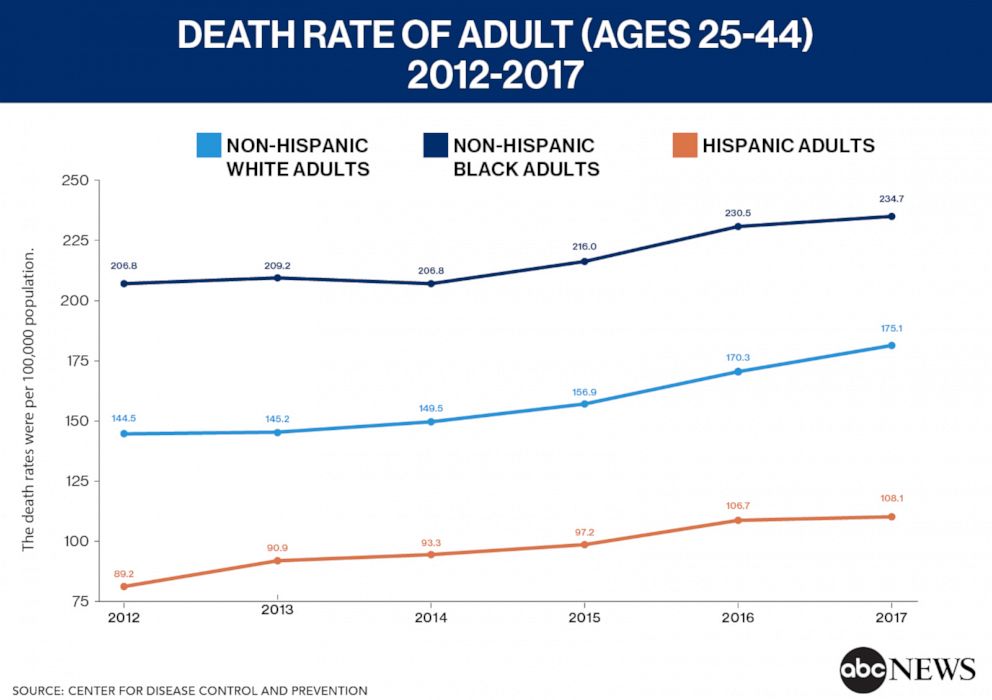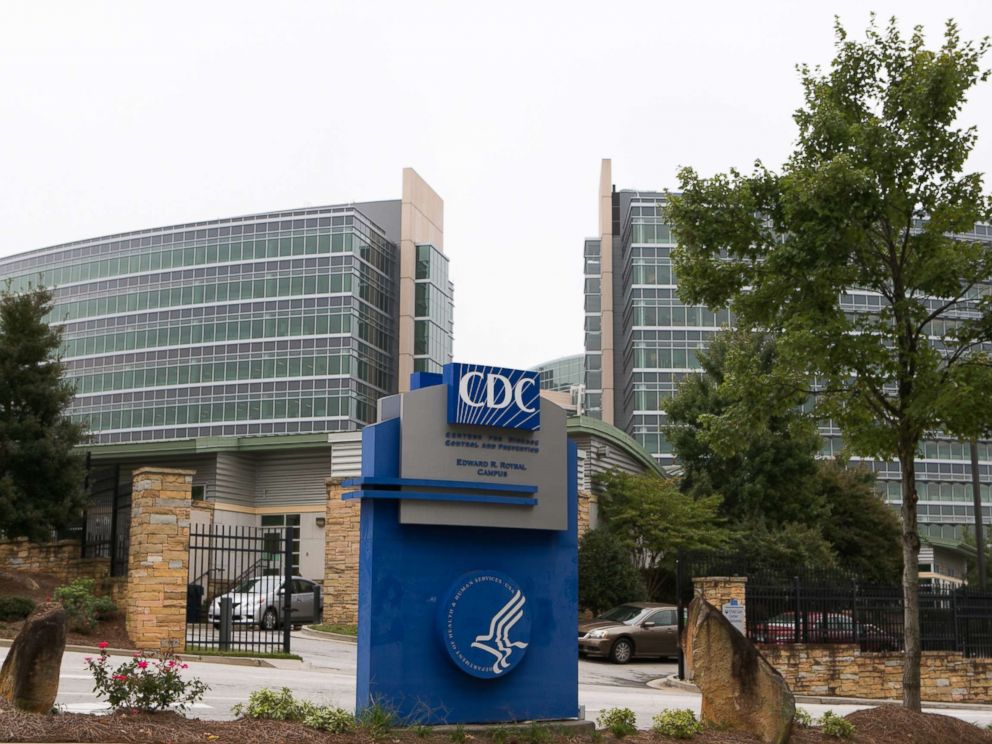Death rates increasing for U.S. adults aged 25 to 44: CDC

Death rates are on the rise for young and middle-aged U.S. adults, with white and black people experiencing higher mortality than Hispanic people, according to new research from the Centers for Disease Control and Prevention (CDC) published Tuesday.
Between 2012 and 2017, the rates for white and black people aged 25 to 44 increased 21% each for both groups, while Hispanic people of the same age range saw a 13% rise.
Sally Curtin, a statistician at the CDC’s National Center for Health Statistics and one of the report’s authors, said an uptick in suicides, homicides and drug overdoses contributed to the higher rates for the younger part of the group.
Suicides in the United States saw a 19.2% increase in young adults aged 25 to 34 from 2012 to 2017, according to the American Foundation for Suicide Prevention. Homicides in the country increased from 2014 to 2016, though the rates were near historic lows, according to the Congressional Research Service.
Drug overdoses declined by around 5% in 2018, the first drop since 1990, according to the provisional figures from the CDC published earlier this month. There were more than 702,000 deaths from drug overdoses between 1999 and 2017, 10% of which occurred in 2017, according to the agency.
Curtin noted that a rise in deaths due to heart disease was a factor in the higher number for the older portion of the 25-to-44 age group.
On a broader scale, the death rates among the three groups diverged.
Overall death rates for Hispanic adults aged 25 and over showed a general decline from 2000 through 2017, according to the research. The overall rates for black and white adults declined through 2011 and 2012, but remained stable through 2017.
For Hispanic adults between 45 and 64, death rates remained steady from 2011 through 2017 after declining from 2000 through 2011. However, rates for white and black adults aged 45 to 64 increased from 2010 to 2017, with a greater increase for white adults than for black adults.
For adults 65 years old and over, all three groups saw general declines over the period of time.
Curtin noted the importance of looking at specific age groups to better understand the death trends.
“[The overall data] sort of masks what’s going in these other groups,” she said.
The statistics came from death certificates from all 50 states and Washington, D.C.
Source: Read Full Article

